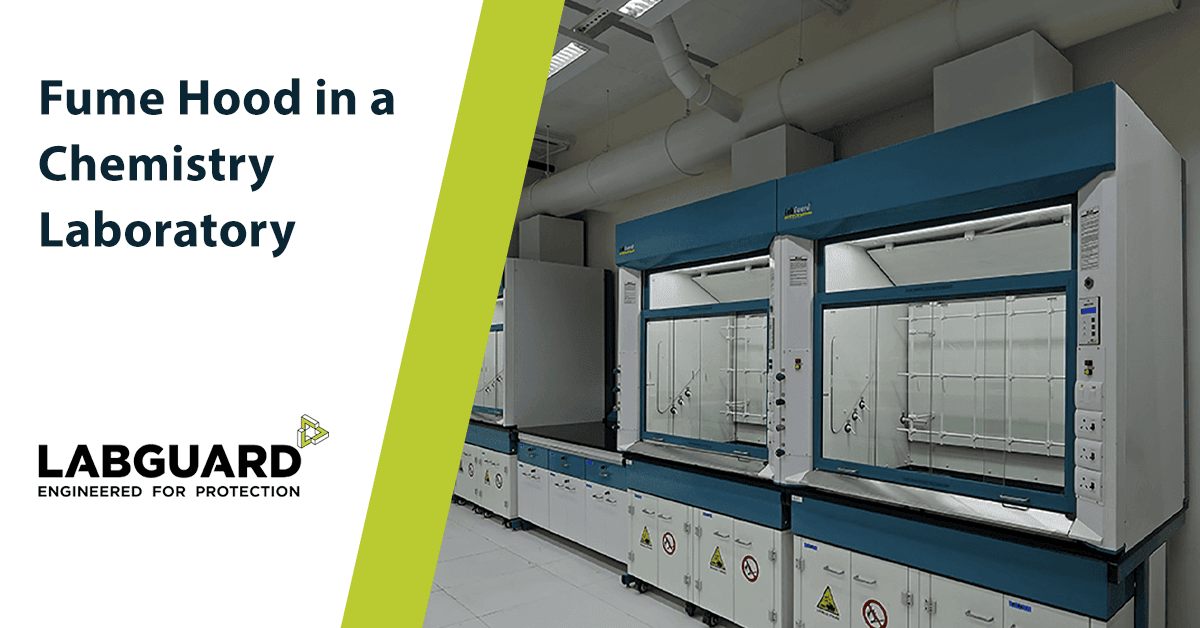A fume hood is facilitating as well as safety equipment. Users of a Chemistry lab understand the first part well, it is the second part that needs clear understanding being directly related to the safety of the users.
In a chemistry lab, the experiments involve chemicals, traces of which could find their way into the human body. This is highly undesirable and must be avoided. Ingested chemicals have the potential to make a person sick to varying degrees. Sometimes even strong odors could make an otherwise healthy person very sick.
Inhalation is the major route of entry of chemicals into our bodies. Chemical fumes and vapors can directly enter our bloodstreams. Small particles could get lodged in the Alveolar Region (interior) of our lungs. A properly designed and installed fume hood reduces user exposure to hazardous Gases, Fumes, Vapors, Dust, and Odors.
A fume Hood confines hazardous airborne material, first diluting it with a large volume of air, drawing it through an exhaust system, and safely venting it out of the laboratory building. Fume Hood keeps the users and the lab environment safe and healthy. It also protects the users from unintended spills, splatter, fire, and minor explosions that could take place in course of the work.
A bench-top fume hood provides for conducting the experiment that must be set up at a working height- as on a bench. A low-bench fume hood accommodates taller setups. A walk-in fume hood is suitable for extra tall setups which could be rolled in and out with ease. If it is a ducted fume hood, the contaminated air is ducted out of the building. In the case of a ductless fume hood, the contaminated air is filtered (traces of chemicals removed) through a filter (activated carbon, chemically treated) and then released into the lab environment. Ductless fume hoods (recirculating fume hoods) need specific filters, targeted against specific hazards.
Radioactive materials require specially engineered fume hoods. Perchloric Acid because of its flammable nature, needs special hoods. Concentrated acids such as HF, Aqua Regia, Nitric Acid, etc. require special polypropylene body hoods.
Also, if so specified, fume hoods come with a chemical storage cabinet beneath the worktop, those can be ventilated with the same exhaust system. Many utilities (Gases, Water, Coolant, Electrical tapping, and accessories can be mounted on a fume hood to facilitate ease of working. Modern fume hoods come with provisions to accommodate sophisticated instrumentation and controls required for complex experimentation. These also facilitate accurate data logging and event recording for future reference.
Fume Hood Monitors with alarms indicate the safe/ unsafe status in real-time. Modern fume hoods keep talking electronically to the laboratory air quality controls and deliver optimum performance. Thanks to them our contemporary chemistry labs are more comfortable, safer, and energy-efficient. Modern fume hoods also save a lot of air conditioning costs. The fume hood technology is ever-evolving to serve the Lab community.
Fume hoods do have limitations that users must understand clearly. They are akin to the lungs of a human being. They keep the users safe and help in efficient working. Users must follow the dos and don’ts and under all conditions adhere to the recommended SOPs.
It is important to get frequent technical audits of the fume hoods, as also user training programs. We must look after the fume hood well so that it is ever ready to look after the safety of users.


